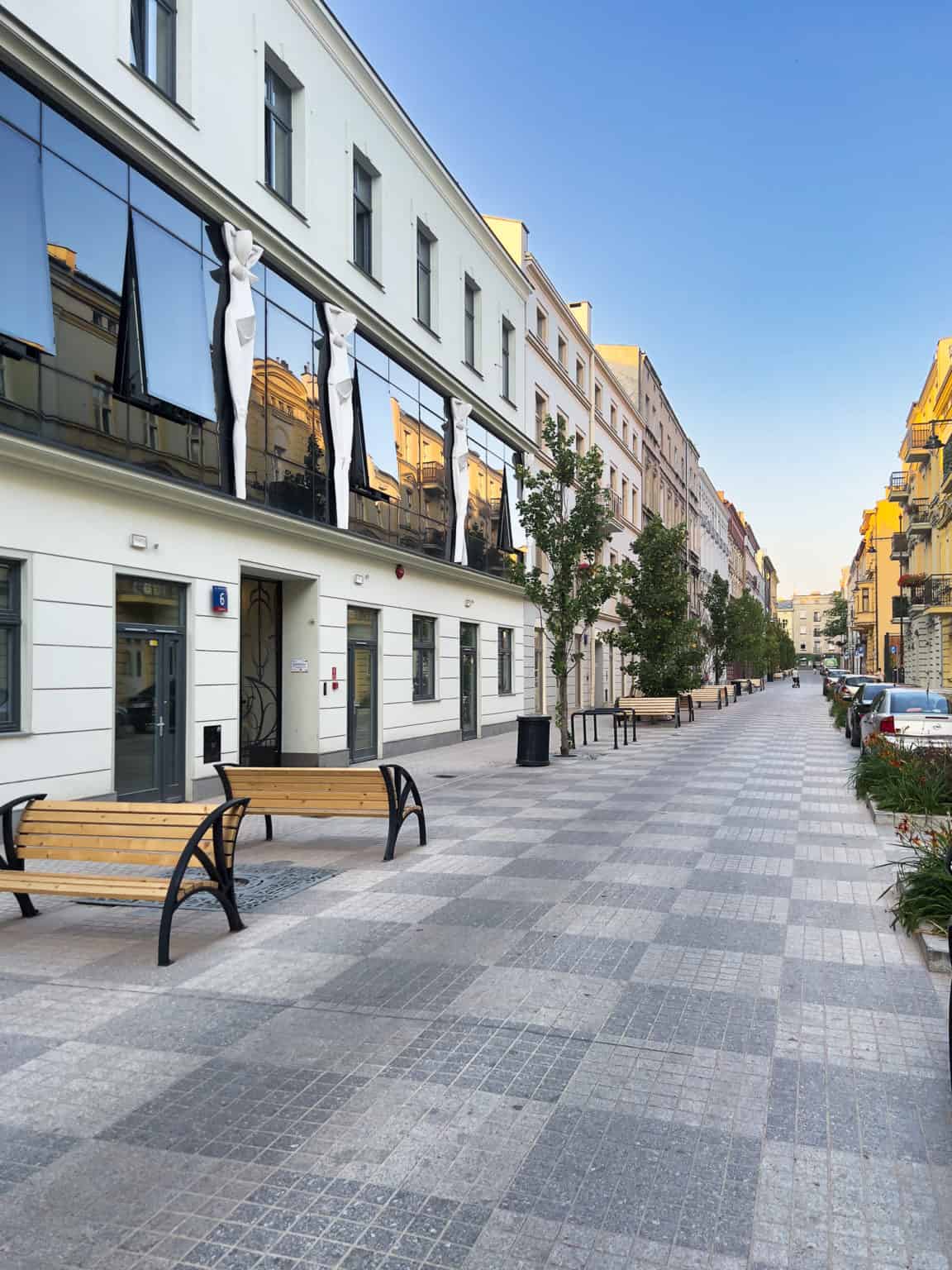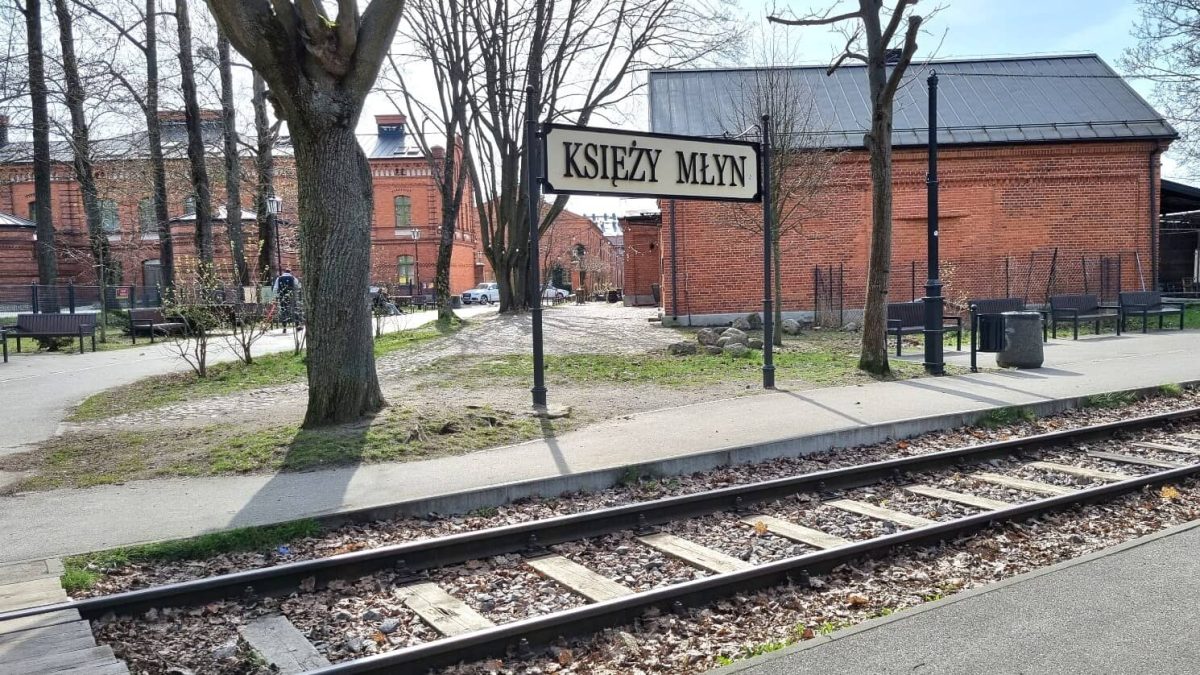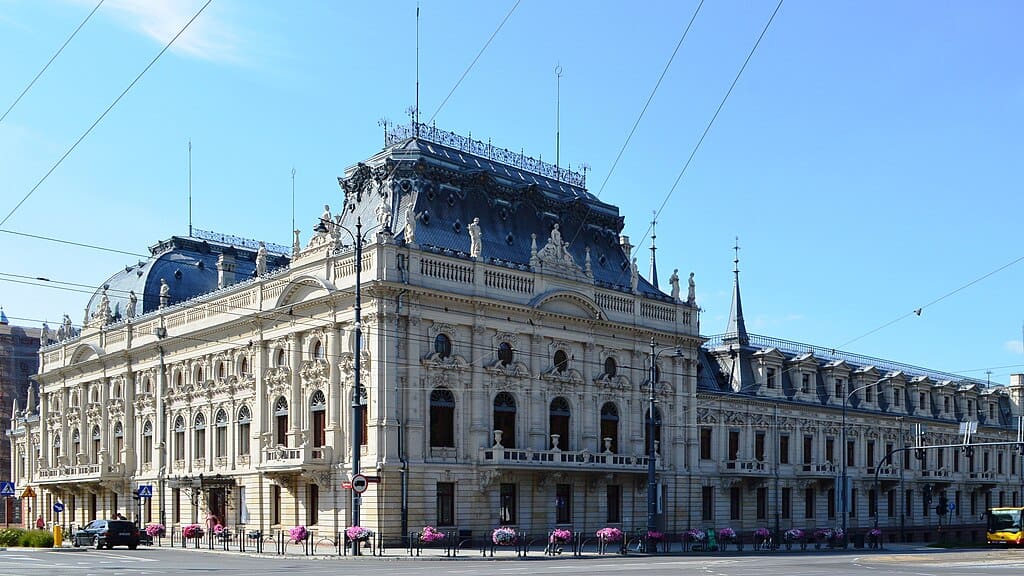I’ve already written about my time living in Łódź between January 2012 and June 2013. That period of my life was mostly about stabilising my teacher career. I had very many students so I didn’t devote much time at all to sightseeing. Nevertheless, I moved back to the city in December 2024 which now means I’m in a strong position to highlight the pros and cons of living in Łódź.
The Good Sides of Living in Łódź
With its revitalised city centre, Łódź has come on leaps and bounds in recent years. There’s a great deal to see and do here, especially if you’re a history buff who’s keen to explore Łódź’s industrial past. Anyway, here are the best things about living in Łódź:
1. Apartment purchase and rental costs are low compared with other major Polish cities
One of the major draws of living in Łódź is the comparatively low apartment rental and purchase costs.
In my post on the average living cost in Poland, I compared real estate prices and rental prices in Łódź and Gdańsk. In the second quarter of 2025, according to data from the National Bank of Poland, the average transaction price of apartments in Łódź and Gdańsk on the primary and secondary markets were as follows:

The figures really do speak for themselves.
As for rental fees, I am currently paying 2,900 zł for a two-bedroom apartment (66 m2) in a gated community in the district of Chojny in Łódź. It’s not in the centre but I can reach Piotrkowska Centrum in only 10 minutes by tram. Construction of the estate was completed in 2011.
Renting an apartment of this size in a gated community will set you back at least 4,000 zł in Gdańsk and 4,500 zł and over in Warsaw.
2. Stunning architecture in a heavily revitalised City Centre
Łódź is changing faster than any other large city in Poland.
In 2016, the City Council of Łódź approved plans for eight areas in the city centre to be revitalised. Revitalization of these zones came to an end in June 2024. Twelve more areas are next in line for regeneration. Indeed, project number nine will see the revitalisation of tenement houses at the northern end of Piotrkowska Street as well as a few buildings on Próchnika and Wieckowskiego streets.
Photographs in my post on the regeneration of the city centre of Łódź reveal just how far the centre of Łódz has come. Moreover, my post – A walk Around the Centre of Łódź – visually reveals the revitalisation of tenement houses, Liberty Square (Plac Wolności), other small squares, parks and even Fabryczna Railway Station.


Back in 2012-13, I didn’t do that much sightseeing in the centre of Łódź because many of the buildings were run-down and ghastly to look at. Even Piotrkowska Street lacked soul back then.
These days on Piotrkowska Street, one can observe a mix of historic neo renaissance and art nouveau buildings, many of which have been restored to their former glory.
All in all, these are exciting times for the residents of Łódź. I can only imagine what the entire City Centre district will look like in another ten years’ time.

3. There’s plenty for history buffs to see and do in Łódź
If you’re a history buff, Łódź could well be the place for you.
Particularly intriguing is Łódź’s development in the period of industrial revolution in the nineteenth century. It is possible to see the remnants of two great industrial empires in Łódź. The first belonged to Karol Scheibler who built the Księży Młyn factory complex, which was the largest workers’ settlement in the city. Architecturally, there’s plenty to admire in the Księży Młyn district. Most notably, visitors can see attractive red-brick buildings, including pretty rows of terraced housing once lived in by workers.


The other focal point of Łódź’s industrial past is the area around present-day Manufaktura on Ogrodowa Street. Izrael Kalmanowicz Poznański, an industrialist of Jewish origin, was the owner of the industrial complex here on Ogrodowa. In the early 1870s, Poznański began the construction of a complex which would cover around 30 hectares upon its completion at the end of the 19th century.
Next to the cotton mill on Ogrodowa, Poznański ordered the construction of a palace for his family. Today, the palace houses the Museum of the City of Łódź (Muzeum Miasta Łodzi).

4. Travelling Opportunities – Łódź is centrally located in Poland
Łódź’s central position in Poland makes it a great place to see all the major cities and other top attractions.
These days, rail travel in Poland is generally efficient, comfortable and affordable. Here are some examples of rail journey times from Łódź to some of the major cities in Poland:
Łódź Kaliska – Kraków – 2h 55m
Łódź Fabryczna – Warsaw Centralna – 1h 05m
Łódź Kaliska – Poznań Główny – 2h 34m
Łódź Widzew – Wrocław Główny – 3h 27m
Łódź Kaliska – Zakopane – 5h 40m
Admittedly, taking the train to some cities is not always the best option. For instance, it takes around three hours to get from Łódź to Katowice by train. The fastest service, from Łódź Widzew to Katowice at 19:36 in the evening, takes two hours and forty-eight minutes. Travelling down the A1 motorway by car, you can reach Katowice in around two hours and 10 minutes. The train service between Łódź and Gdańsk is also rather slow with IC (InterCity) trains connecting the two cities in around four and a half hours. It only takes around three hours and twenty minutes to travel between Łódź and Gdańsk by car.
The Bad Sides of Living in Łódź
There are some downsides to living in Łódź. However, I believe that they are more minor inconveniences rather than genuine reasons to give the city a wide berth as a place to live in.
1. Public Transport is a bit hit and miss
Over the past 12 months or so, I have observed that the public transport system in Łódź is nowhere near as reliable and frequent as it is in Warsaw and Gdańsk.
I currently live in the Chojny district of Łódź, just off Rzgowska Street. For the city centre, there are two tram stops within a short walk of my flat. On weekdays, trams 2 and 6 tend to run every 20 minutes during the early morning and late evening hours, and every 15 minutes during the day. On weekends, they run every 20 minutes. In theory, I shouldn’t have to wait much more than 10 minutes for a tram. If I see that I have to wait a long time for tram 6 to rock up, I walk 30 seconds to another tram stop to check the status of tram 2. Both trams run up to Piotrkowska Centrum – the main tram hub in Łódź.
It often happens that as I reach the crossing, tram 2 has already arrived. When the doors close, the doors close. I know I’m not going to make it on that tram.
Timetables mean very little when trams run late. Unlike in Gdańsk, there are some shared road sections in Łódź where cars have to run on tram lines. This can cause delays to trams, especially at peak hours.
Another issue is with the real-time passenger information system boards which are located at most bus and tram stops. They are often inaccurate.
Long story short. When a tram or bus arrives in Łódź, it arrives. You can’t plan for much here.
2. Signs of poverty
Living in Gdańsk for nearly five years, I must admit that I encountered a bit of culture shock upon my return to Łódź. There are not that many buildings in Gdańsk which conjure up images in your mind of squalor. Whilst we shouldn’t always judge a book by its cover, the characters that tend to emanate from these run-down buildings in Łódź are less than savoury.
I live on the border between two districts – Górniak and Chojny. There are some decent parts and streets in both of them. However, there are some streets which are downright scary. The ironically named Ulica Miła (‘Nice Street’) is just a stone’s throw from my estate. As I wander down to the tram stop, I tend to avoid gazing down Miła Street on the other side of the road. Besides, the only people that seem to emerge from this street are scruffy alcoholics, low-lives and sketchy individuals pushing shopping trolleys. There are many other dodgy streets just off Zarzewska and Przybyszewskiego streets close to Reymont Park.
The district of Stare Bałuty probably has the worst reputation in Łódź. As an old Łódź proverb goes, ‘don’t approach Bałuty without a stick and a knife’ (‘bez kija i noża nie podchodź do bałuciorza’). Personally, I have never spent much time in the district. Maybe one or two visits for something I had to buy. The area is not inviting at all and I suspect that I may never step foot in Stare Bałuty again.
3. Łódź is dirtier than other major cities in Poland
Łódź’s municipal workers, such as street sweepers and litter pickers, don’t seem to be very active in parks and districts away from the city centre. It’s not all the local authorities’ fault of course. There are very many dog owners who seem to be excused from cleaning up after their dogs. Goodness, there’s so much dog muck in the area I live.
I’ve always had a soft spot for Łódź
Even though I’ve considered the pros and cons of living in Łódź in this post, I must admit that I’ve always had a soft spot for Łódź. This post is clearly balanced but, for me, there are far more good sides to living in Łódź than bad sides. With all the revitalisation of the city’s streets and adaptation of tenement houses and historic buildings, Łódź has shed its image of being a declining industrial city.

